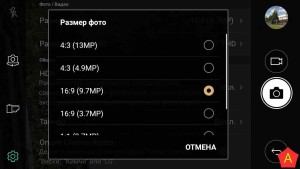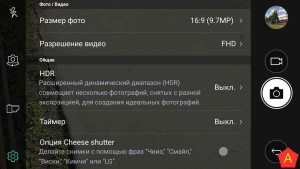Appearance The LG X Power 2 M320 hasn't changed much from its predecessor's design,.
The novelty has the same rounded shape, a large display and touch buttons at the bottom of the screen. Unless the top and bottom bezels are now flat and solid, rather than curved like last year's model. The back of the LG X Power 2 M320 has also not changed much: the back is still textured, but the camera is not located on the left, but in the center of the rear panel.
The dimensions of the LG X Power 2 M320 and the weight of 164 grams are 154.7 x 78.1 x 8.4 mm. It is lighter, but slightly larger than another large long-liver - but in height and width it is inferior to such a hit as.
The LG X Power 2 M320 will be available in black, titanium, blue and gold.
Screen
LG X Power 2 M320 has a 5.5-inch display with HD-resolution (1280 × 720 pixels). The pixel density is 267 ppi, which is not the best indicator among smartphones. The image on such a screen can hardly be called clear. The company claims to have eliminated the air gap between the matrix and protective glass... This should get rid of glare on the display, thanks to which the screen will be better read in the sun, but how it will work in practice will only be shown. Another announced feature is the Comfort View function. With it, the image will go into warmer tones, which should be convenient for reading.
Cameras
LG X Power 2 M320 received 13 and 5 MP cameras. No special information has been announced about them, except for the presence of the main camera with touch focus, a face recognition sensor, HDR mode and Zero Shutter Lag features. The latter is designed to remove the pause between pressing the shutter button and freezing the image in the picture.
The front camera has an LED flash and an Auto Selfie function that automatically detects faces and takes pictures. The standard “Hand Gesture” function allows you to shoot by clenching and unclenching your fist in the frame. It has been in almost all models of the company for a long time, but it continues to be presented as something new and exclusive.
Communications
The set of communications LG X Power 2 M320 is quite typical for today:
- Wi-Fi 802.11 b / g / n
- Bluetooth 4.2
- A-GPS
- Micro-USB 2.0 connector
We can also note the presence of a microSD slot, which can expand the memory up to 256 GB.
Battery
The LG X Power 2 M320 uses accumulator battery capacity of 4500 mAh, which is 400 mAh more than its predecessor. Already on paper, this is a very good indicator, but the manufacturer claims to be downright fantastic survivability and work without recharging for several days. LG promises up to 15 hours of continuous video viewing, up to 18 hours of web surfing, or up to 14 hours of GPS navigation. In addition, the phone supports fast charging - it takes about 2 hours to charge the device from 0 to 100%.
Performance
The performance of the LG X Power 2 M320 can be tentatively described as average for its price.
The smartphone uses 1.5 / 2 GB random access memory(depending on modification) and eight-core 64-bit MediaTek MT6750 chipset (eight Cortex-A53 cores at 1.5 GHz). Usually this is enough for adequate operation of the phone, many games and most applications.
Memory
LG X Power 2 M320 is equipped with 16 GB of permanent memory. Average, although this should be enough for storing photos and a set of applications. I am glad that the amount of memory can always be expanded with a card with a capacity of up to 256 GB, and a separate slot is allocated for it.
Information about the brand, model and alternative names of a specific device, if any.
Design
Information about the dimensions and weight of the device, presented in different units of measurement. Used materials, offered colors, certificates.
| Width Width information - refers to the horizontal side of the device in its standard orientation during use. | 78.1 mm (millimeters) 7.81 cm (centimeters) 0.26 ft (feet) 3.07 in (inches) |
| Height Height information - refers to the vertical side of the device in its standard orientation during use. | 154.7 mm (millimeters) 15.47 cm (centimeters) 0.51 ft (feet) 6.09 in (inches) |
| Thickness Information about the thickness of the device in different units measurements. | 8.4 mm (millimeters) 0.84 cm (centimeters) 0.03 ft (feet) 0.33 in (inches) |
| The weight Information about the weight of the device in different units of measurement. | 164 g (grams) 0.36 lbs (pounds) 5.78 oz (ounces) |
| Volume The approximate volume of the device, calculated based on the dimensions provided by the manufacturer. Refers to devices with a rectangular parallelepiped shape. | 101.49 cm³ (cubic centimeters) 6.16 in³ (cubic inches) |
| Colors Information about the colors in which this device is offered for sale. | Black Blue Golden Gray |
| Materials for the manufacture of the case Materials used for the manufacture of the device body. | Plastic |
SIM card
The SIM card is used in mobile devices to store data that certifies the authenticity of mobile service subscribers.
Mobile networks
A mobile network is a radio system that allows multiple mobile devices to communicate with each other.
| GSM GSM (Global System for Mobile Communications) is designed to replace the analog mobile network (1G). For this reason, GSM is often referred to as a 2G mobile network. It is enhanced by the addition of GPRS (General Packet Radio Services) and later EDGE (Enhanced Data rates for GSM Evolution) technologies. | GSM 850 MHz GSM 900 MHz GSM 1800 MHz GSM 1900 MHz |
| UMTS UMTS stands for Universal Mobile Telecommunications System. It is based on the GSM standard and refers to 3G mobile networks. Developed by 3GPP and its biggest advantage is to provide more speed and spectral efficiency thanks to W-CDMA technology. | UMTS 850 MHz UMTS 900 MHz UMTS 1900 MHz UMTS 2100 MHz |
| LTE LTE (Long Term Evolution) is defined as a fourth generation (4G) technology. It is developed by 3GPP based on GSM / EDGE and UMTS / HSPA with the aim of increasing the capacity and speed of wireless mobile networks. The subsequent development of technologies is called LTE Advanced. | LTE 800 MHz LTE 900 MHz LTE 1800 MHz LTE 2100 MHz LTE 2600 MHz |
Mobile technology and data rates
Communication between devices in mobile networks is carried out using technologies that provide different data rates.
Operating system
An operating system is the system software that controls and coordinates the operation of the hardware components on a device.
SoC (System on a Chip)
A system on a chip (SoC) integrates all the major hardware components of a mobile device into a single chip.
| SoC (System on a Chip) A system on a chip (SoC) integrates various hardware components such as a processor, graphics processor, memory, peripherals, interfaces, etc., as well as the software required for their operation. | MediaTek MT6750 |
| Technological process Information about the technological process by which the chip is manufactured. The value in nanometers is half the distance between the elements in the processor. | 28 nm (nanometers) |
| Processor (CPU) The main function of the processor (CPU) of a mobile device is to interpret and execute instructions contained in software applications. | 4x 1.5 GHz ARM Cortex-A53, 4x 1.0 GHz ARM Cortex-A53 |
| Processor size The bit size of the processor is determined by the size (in bits) of registers, address buses and data buses. 64-bit processors offer better performance than 32-bit processors, which in turn are more efficient than 16-bit processors. | 64 bit |
| Instruction set architecture Instructions are commands with which the software sets / controls the operation of the processor. Information about the instruction set (ISA) that the processor can execute. | ARMv8-A |
| Level 1 cache (L1) The cache memory is used by the processor to reduce the time it takes to access more frequently used data and instructions. L1 (level 1) cache is small and is much faster than both system memory and other levels of cache. If the processor does not find the requested data in L1, it continues to look for it in the L2 cache. On some processors, this search is performed simultaneously in L1 and L2. | 32 KB + 32 KB (kilobytes) |
| L2 cache L2 (level 2) cache is slower than L1, but instead has a larger capacity to cache more data. It, like L1, is much faster than system memory (RAM). If the processor does not find the requested data in L2, it continues to look for them in L3 cache memory (if available) or in RAM memory. | 512 KB (kilobytes) 0.5 MB (megabytes) |
| Number of processor cores The processor core executes program instructions. There are processors with one, two or more cores. Having more cores increases performance by allowing multiple instructions to execute in parallel. | 8 |
| CPU clock speed The clock speed of a processor describes its speed in cycles per second. It is measured in megahertz (MHz) or gigahertz (GHz). | 1500 MHz (megahertz) |
| Graphics processing unit (GPU) A graphics processing unit (GPU) handles computation for a variety of 2D / 3D graphics applications... V mobile devices it is used most often by games, consumer interface, video applications, and more. | ARM Mali-T860 MP2 |
| Number of cores GPU Like a processor, a GPU is made up of several working parts called cores. They handle the graphical computation of various applications. | 2 |
| GPU clock speed The speed of work is clock frequency GPU, which is measured in megahertz (MHz) or gigahertz (GHz). | 520 MHz (megahertz) |
| The amount of random access memory (RAM) Random access memory (RAM) used operating system and all installed applications. The data that is saved in the RAM is lost after the device is turned off or restarted. | 1.5 GB (gigabytes) 2 GB (gigabytes) |
| Memory type (RAM) Information about the type of random access memory (RAM) used by the device. | LPDDR3 |
| Number of RAM channels Information about the number of RAM channels that are integrated into the SoC. More channels means more high speeds data transmission. | Single channel |
| RAM frequency The frequency of the RAM determines its speed of operation, more specifically, the speed of reading / writing data. | 667 MHz (megahertz) |
Built-in memory
Each mobile device has built-in (non-removable) fixed memory.
Memory cards
Memory cards are used in mobile devices to increase the storage space for data.
Screen
The screen of a mobile device is characterized by its technology, resolution, pixel density, diagonal length, color depth, etc.
| Type / technology One of the main characteristics of the screen is the technology by which it is made and on which the image quality of information directly depends. | IPS |
| Diagonal On mobile devices, screen size is expressed in terms of the length of its diagonal, measured in inches. | 5.5 in (inches) 139.7 mm (millimeters) 13.97 cm (centimeters) |
| Width Approximate screen width | 2.7 in (inches) 68.49 mm (millimeters) 6.85 cm (centimeters) |
| Height Approximate screen height | 4.79 in (inches) 121.76 mm (millimeters) 12.18 cm (centimeters) |
| Aspect ratio The aspect ratio of the long side of the screen to its short side | 1.778:1 16:9 |
| Permission Screen resolution shows the number of pixels horizontally and vertically on the screen. More a high resolution means sharper image detail. | 720 x 1280 pixels |
| Pixel density Information about the number of pixels per centimeter or inch of the screen. Higher density allows information to be shown on the screen in clearer detail. | 267 ppi (pixels per inch) 104 ppcm (pixels per centimeter) |
| Color depth Screen color depth reflects the total number of bits used for color components in one pixel. Information about the maximum number of colors that the screen can display. | 24 bit 16777216 flowers |
| Screen footprint The approximate percentage of the display area on the front of the device. | 69.24% (percent) |
| Other characteristics Information about other functions and features of the screen. | Capacitive Multitouch |
Sensors
Different sensors perform different quantitative measurements and convert physical metrics into signals that can be recognized by the mobile device.
Main camera
The main camera of a mobile device is usually located on the back of the body and is used for photo and video shooting.
| Sensor type Digital cameras use photo sensors to take photographs. The sensor, as well as the optics, are one of the main factors in the quality of the camera in a mobile device. | CMOS (complementary metal-oxide semiconductor) |
| Diaphragm | f / 2.2 |
| Flash type | LED |
| Image Resolution One of the main characteristics of cameras on mobile devices is their resolution, which shows the number of pixels horizontally and vertically in an image. | 4160 x 3120 pixels 12.98 MP (megapixels) |
| Video Resolution Information about the maximum supported resolution for video recording by the device. | 1920 x 1080 pixels 2.07 MP (megapixels) |
Information about the maximum number of frames per second (fps) supported by the device when shooting video at maximum resolution. Some of the main standard video capture and playback speeds are 24p, 25p, 30p, 60p. | 30 frames / sec (frames per second) |
| Specifications Information about other software and hardware features associated with the main camera to improve its functionality. | Autofocus Burst shooting Digital zoom Geographic tags Panoramic shooting HDR shooting Touch focus Face recognition Adjusting the white balance ISO setting Exposure compensation Self-timer Scene selection mode |
Additional camera
Additional cameras are usually mounted above the screen of the device and are used mainly for video calls, gesture recognition, etc.
| Diaphragm Aperture (f-number) is the size of the aperture opening that controls the amount of light reaching the photosensor. A lower f-number means a larger aperture opening. | f / 2.2 |
| Flash type The most common types of flashes in mobile cameras are LED and Xenon flashes. LED-flashes give softer light and, unlike brighter xenon ones, are also used for video filming. | LED |
| Image Resolution Information about the maximum resolution of the secondary camera when shooting. In most cases, the resolution of the secondary camera is lower than that of the primary camera. | 2592 x 1944 pixels 5.04 MP (megapixels) |
| Video Resolution Information about the maximum supported resolution for video recording additional camera. | 1920 x 1080 pixels 2.07 MP (megapixels) |
| Video - frame rate / frames per second. Information about the maximum number of frames per second (fps) supported by the secondary camera when shooting video at maximum resolution. | 30 frames / sec (frames per second) |
| Wide-angle lens - 120 ° |
Audio
Information about the type of speakers and audio technology supported by the device.
Radio
The radio of the mobile device is a built-in FM receiver.
Locating
Information about the navigation and positioning technologies supported by the device.
Wi-Fi
Wi-Fi is a technology that enables wireless communication for transferring data over short distances between various devices.
Bluetooth
Bluetooth is a standard for secure wireless transfer of data between different types of devices over short distances.
USB
USB (Universal Serial Bus) is an industry standard that allows different electronic devices to exchange data.
Headphone jack
This is an audio connector, which is also called an audio connector. The most widely used standard in mobile devices is the 3.5mm headphone jack.
Connecting devices
Information about other important connection technologies supported by the device.
Browser
A web browser is a software application for accessing and viewing information on the Internet.
| Browser Information about some of the main features and standards supported by the device browser. | Html HTML5 CSS 3 |
Audio file formats / codecs
Mobile devices support different audio file formats and codecs, which respectively store and encode / decode digital audio data.
Video file formats / codecs
Mobile devices support different video file formats and codecs, which respectively store and encode / decode digital video data.
Battery
Mobile device batteries differ in their capacity and technology. They provide the electrical charge required for their function.
| Capacity Battery capacity indicates the maximum charge it can store, measured in milliampere-hours. | 4500 mAh (milliampere-hours) |
| Type of The type of battery is determined by its structure and, more precisely, by the chemicals used. There are different types of batteries, with lithium-ion and lithium-ion polymer batteries most commonly used in mobile devices. | Li-polymer |
| Talk time 2G Talk time in 2G is the period of time during which the battery charge is completely discharged during a continuous conversation on a 2G network. | 8 h (hours) 480 min (minutes) 0.3 days |
| Standby time 2G Standby time in 2G is the period of time during which the battery charge is completely discharged when the device is in stand-by mode and connected to a 2G network. | 200 h (hours) 12000 min (minutes) 8.3 days |
| Talk time 3G Talk time in 3G is the period of time during which the battery charge is completely discharged during a continuous conversation on a 3G network. | 8 h (hours) 480 min (minutes) 0.3 days |
| 3G standby time Standby time in 3G is the period of time during which the battery charge is completely discharged when the device is in stand-by mode and connected to a 3G network. | 200 h (hours) 12000 min (minutes) 8.3 days |
| Specifications Information about some additional characteristics of the device's battery. | Non-removable |
Specific Absorption Rate (SAR)
SAR levels refer to the amount of electromagnetic radiation absorbed by the human body when using a mobile device.
| SAR level for head (EU) The SAR level indicates maximum amount electromagnetic radiation to which the human body is exposed if the mobile device is held close to the ear in the speaking position. In Europe, the maximum SAR value for mobile devices is limited to 2 W / kg per 10 grams of human tissue. This standard established by the CENELEC committee in accordance with IEC standards, following the ICNIRP guidelines of 1998. | 0.519 W / kg (Watts per kilogram) |
| Body SAR (EU) The SAR level indicates the maximum amount of electromagnetic radiation to which the human body is exposed if the mobile device is held at hip level. The highest SAR value for mobile devices in Europe is 2 W / kg per 10 grams of human tissue. This standard was established by the CENELEC committee in accordance with ICNIRP guidelines from 1998 and IEC standards. | 1.36 W / kg (Watts per kilogram) |
| Head SAR (US) The SAR level indicates the maximum amount of electromagnetic radiation that a person's body is exposed to if you hold a mobile device near your ear. The maximum value used in the United States is 1.6 W / kg per gram of human tissue. US mobile devices are controlled by CTIA and the FCC conducts tests and sets their SAR values. | 1.06 W / kg (Watts per kilogram) |
| Body SAR (US) The SAR level indicates the maximum amount of electromagnetic radiation to which the human body is exposed if the mobile device is held at hip level. The highest SAR value in the United States is 1.6 W / kg per gram of human tissue. This value is set by the FCC and CTIA monitors mobile devices for compliance with this standard. | 0.79 W / kg (Watts per kilogram) |
A long-lasting novelty from the famous South Korean giant was presented recently. But, as the name suggests, LG X power 2 is not a groundbreaking development: this is the second modification of the base LG X power. Display diagonal, battery capacity, processor frequency are slightly increased. But, more on that.
Design
The first X power didn’t have advanced features, but it met all the needs of users not obsessed with video games. The positioning of the successor has not actually changed: the company has made the main emphasis on autonomy: it is emphasized that lovers of mobile gadgets will be able to use this solution for a short weekend without the need for recharging. Also, the manufacturer himself states that Lji X Power 2 Is, first of all, an ideal gadget for multimedia tasks.
But, actually, about the design. Firstly, the diagonal of the display has increased from 5.3 inches to 5.5. At the same time, the permission was saved in the echdi format. This was probably done to save battery life. And whoever says anything, for a smartphone of small dimensions, more is not needed. Secondly, the parameters of the case have changed slightly: the second modification did not inherit its appearance from its predecessor. The predecessor was distinguished by the original, but still strict design, characteristic of Algie. The highlight here are the silver bezels around the frame and camera lens, as well as the subtle texture on the back. The rest of the design is still restrained: nevertheless, gadgets from LG are still recognizable, and this pleases in the abundance of faceless competitors.
Technical specifications
The smartphone received a battery with a capacity of 4500mAh. Considering that the emphasis is on autonomy, the characteristics are quite expected: from a fully charged battery, the device will play videos for 15 hours or it will be enough for 18 hours of surfing the net. There are fast charging: so, in an hour the smartphone is able to charge from the network up to 50%, it will take 2 hours to charge the battery up to 100%. As for the processor, a media library MT6750 with 2 GB of RAM is used here. It is non-resource-intensive iron that has become the key to high autonomy. Well, one cannot but say about front camera: it got an LED flash, which is still a rarity today, although it is used in some affordable gadgets.
And again we welcome you, dear readers of our site.
To be honest, I somehow missed the moment of LG X power 2 entering the market, but this is a worthy replacement for the first generation smartphone. The previous model also seemed to us very decent, but this one did not hit the face in the mud. We will tell you about all the advantages, disadvantages and, in general, our opinion in the review. Let's start with the technical characteristics:
- Body materials Plastic
- Operating room Android system 7
- 5.5 ″ IPS screen, 1280 × 720, Gorilla Glass, 267 PPI
- Cameras 13 MP + 5 MP (front wide-angle)
- CPU (processor) MediaTek MT6750, 8 cores 1.5 GHz
- Mali-T860 MP2 video processor
- RAM (random access memory) 2 GB
- ROM (built-in memory) 16 GB (free 9 GB), + MicroSD up to 2 TB
- Communication GSM / 3G / 4G
- SIM card 2 SIM + memory card
- FM radio Yes
- Broadcast Wi-Fi data, Bluetooth
GPS / GLONASS / BDS Yes / No / No - Battery, mAh 4500
- Real battery test 12 hours, 30 minutes video at maximum brightness
- Dimensions, weight 154.7 x 78.1 x 8.4 mm, 164 grams
- Features Front Flash (Flashlight), Dual SIM + Micro SD Card
Appearance
In general, the design of the LG X power 2 for 2017 is very simple. It can be seen that no emphasis was placed on him. Came out a kind workhorse, which takes only its autonomy and several other characteristics, no more. But about them later, and now specifically about the appearance.
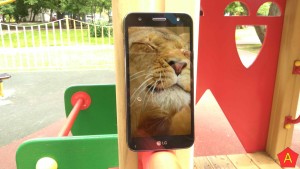
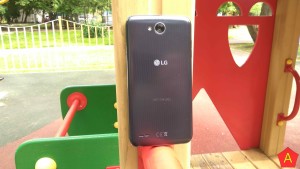
As you can see, the screen is good even in the sun. In general, we have an oval plastic brick. Large frames are striking at the front, and at the back it is an ordinary plastic bar, without any "raisins". By the way, for many users this prostate is generally a plus, so we don't argue about tastes, of course, but in our time, when almost all gadgets are made of metal or glass, often with small frames ... Plastic already seems to be a delight, or something from of the past.
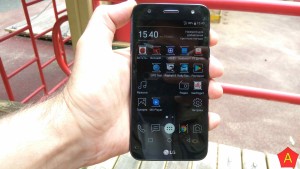

On the right side is only the power button. By the way, it is stated that the frames are made of metal, but we didn't think so.
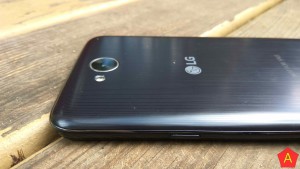
On the other side, you'll find the volume buttons and two trays that hide the microSD card slot and the 2 SIM card slot. But this is already a feature. You can put two SIM cards and a memory card at the same time.
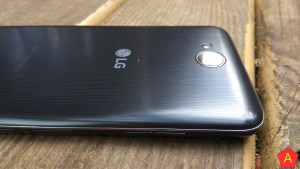
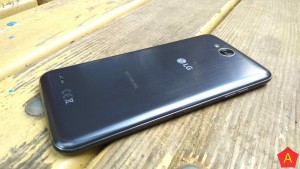
At the bottom there is a connector for microUSB, a microphone and a headphone jack, by the way, the sound, as usual with LG, is excellent. The speaker was placed in a very convenient place, but still it is muffled when you put the smartphone screen up. Sounds pretty good though.
![]()
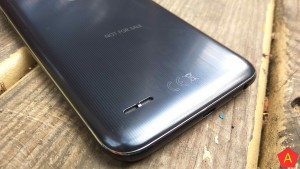
Behind we see a huge camera with a flash. It looks strange to me.

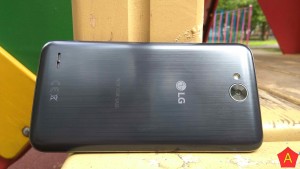
Note that there is a model in two colors, black and gold.
Screen
As mentioned above, the screen copes well with the picture in the bright sun, because the brightness allows it. The diagonal of the screen is 5.5 inches, which is quite a lot. For me it would be a decisive factor when choosing a smartphone, plus these frames ... And the quality raises no objections. Excellent IPS matrix with HD resolution (only 294 ppi) from LG. The color reproduction is so good that it is not even upsetting the lack of the ability to adjust the color temperature of the screen.
![]()
The screen is good, but no more, it does not reach the "plus".
Shell
Excellent as always. Works on Android 7. Very user-friendly, easy to customize.
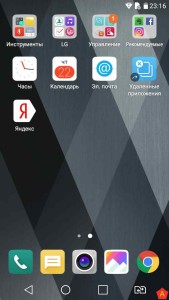
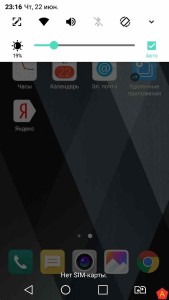
There are all the necessary basic settings.
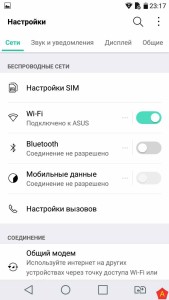
It is possible to change the theme.
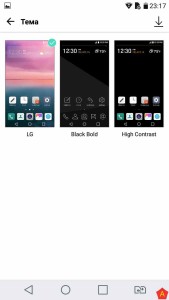
We fell in love with this one, dark one. With it, the autonomy is slightly higher.
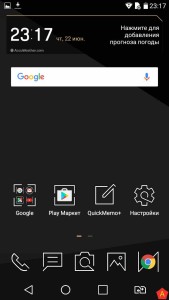
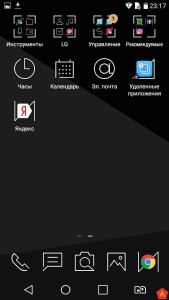
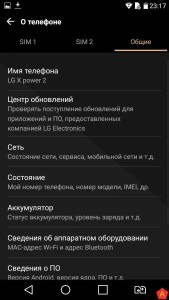

In addition to the basic settings, there are additional ones. For example, a blue filter, changing navigation buttons, label size.



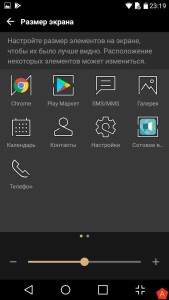
On the locked screen it is possible to activate the clock screensaver. It does not terrorize the battery much, but looks very nice.


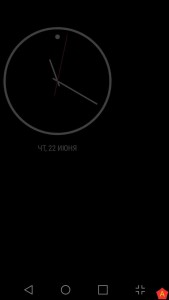
There are three interface modes, with an application menu, without it, and a simple mode.

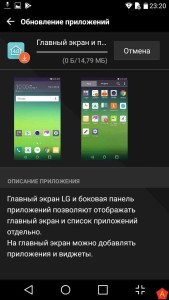
It is possible to manipulate labels, create new labels. Very useful things, but not necessary for many.
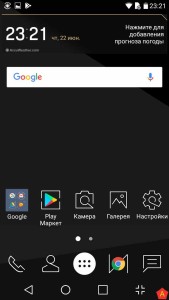

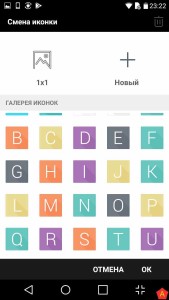
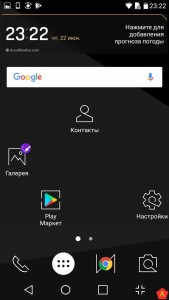
Finally, let us note that it is possible to set a "quick" button for the specified actions. And do not forget about the multi-window mode, which is also present here.
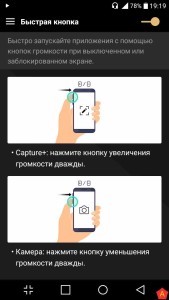
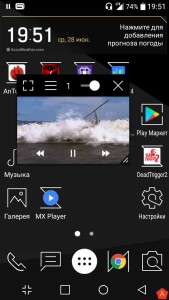

Performance
This is far from the most powerful device that we have ever tested, but it plays many games without any problems. Responsible for the performance is the eight-core MediaTek MT6750 (up to 1.5 GHz) paired with the Mali-T860 MP2 video processor. The size of the RAM in the device is 2 GB, but the built-in memory was given to us as much as 16 GB. But do not forget about support for memory cards up to 2 TB, which do not yet exist in nature.

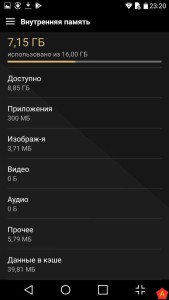
All familiar games went without any problems at all.

![]()


And here are the FPS test results for those who really care. An excellent indicator!
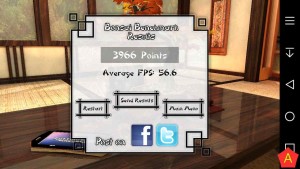
Battery
Despite the gluttonous processor, the 4500 mAh battery fully justifies the name of the smartphone "power". Its autonomy is wild. You can stretch for three whole days without recharging, while the smartphone will work all these days and not lie in your pocket. And the video at maximum brightness LG X power 2 played for more than 12 hours, on an IPS display, this is no joke.
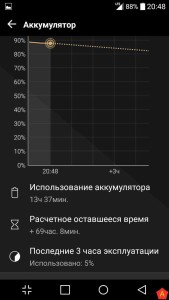
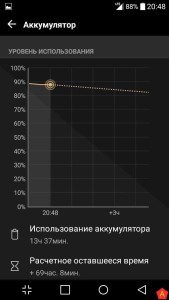

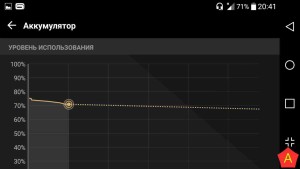


The charge is used very carefully. And this is good!
Camera
There are two cameras in the device, but only one pleased me - the main one with 13 MP. She does nice photos, in contrast to the 5MP front one, although it is wide-angle and has a flash. Photos on her come out not so good.
